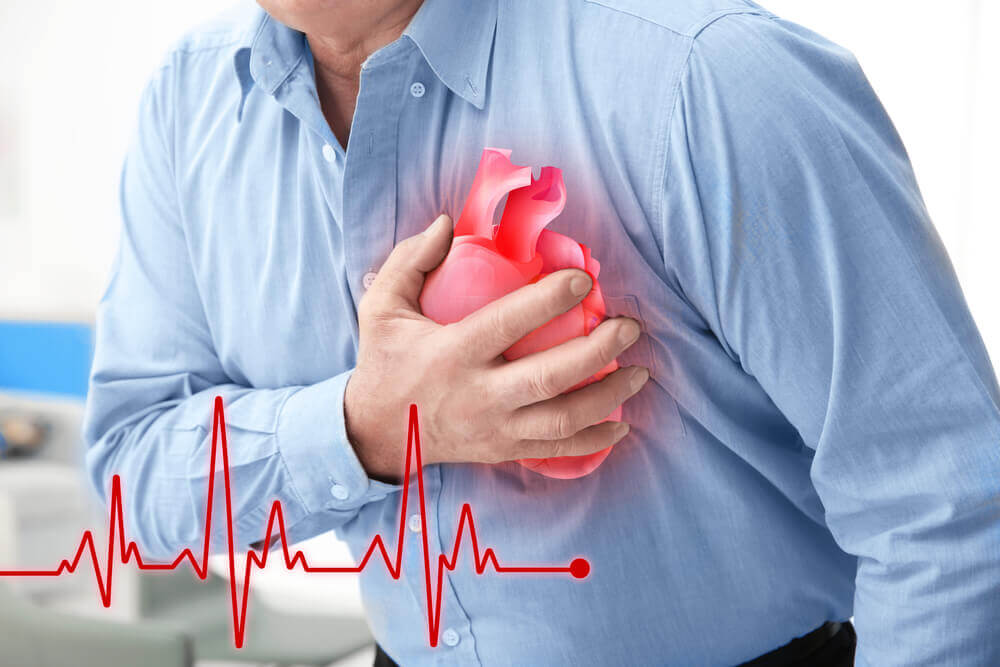Heart attacks, medically known as myocardial infarctions, are one of the leading causes of death globally. A heart attack occurs when blood flow to a part of the heart is blocked, usually by a blood clot, leading to damage of the heart muscle. Early detection and prompt treatment are crucial to improving outcomes and saving lives.
Recognizing the early symptoms and warning signs can help prevent a fatal event or reduce complications. This article explores the major signs, types of symptoms in men vs women, and what to do in case of a suspected heart attack.
What Happens During a Heart Attack?
A heart attack typically occurs due to a blockage in one or more coronary arteries. These blockages are most often the result of plaque buildup (atherosclerosis), which can rupture and cause a blood clot. The affected part of the heart then begins to suffer from a lack of oxygen and nutrients, resulting in damage or even death of heart tissue.
If left untreated, a heart attack can lead to:
- Irregular heart rhythms (arrhythmias)
- Heart failure
- Sudden cardiac arrest
- Death
Classic Symptoms of a Heart Attack
The following are considered hallmark or classic symptoms that most people associate with a heart attack:
- Chest pain or discomfort: Often described as pressure, tightness, fullness, or a squeezing sensation. It may last more than a few minutes or come and go.
- Pain radiating to other areas: Commonly to the shoulders, arms (especially the left arm), neck, jaw, or back.
- Shortness of breath: May occur with or without chest discomfort.
- Sweating: Profuse or cold sweats unrelated to physical activity.
- Nausea or vomiting
- Lightheadedness or dizziness
- Extreme fatigue
Not everyone experiences all these symptoms. In some cases, the signs are mild and may not be recognized as a heart attack at all.
Silent Heart Attacks
A silent heart attack occurs without noticeable symptoms, or the signs may be so subtle that they are dismissed. These are more common in:
- People with diabetes
- Older adults
- Women
Often, silent heart attacks are discovered later through ECG, echocardiogram, or other cardiac tests.
Differences in Heart Attack Symptoms Between Men and Women
While chest pain is the most common symptom for both sexes, women are more likely to experience atypical symptoms.
In Men:
- Crushing chest pain
- Pain in left arm
- Shortness of breath
- Cold sweats
In Women:
- Fatigue (even days or weeks before)
- Shortness of breath
- Nausea or indigestion-like discomfort
- Pain in the neck, jaw, or back
- Sleep disturbances
- Anxiety without cause
This difference often leads to delayed treatment in women, making awareness vital.
Early Warning Signs to Watch For
Many heart attacks are preceded by warning signs that occur hours, days, or even weeks before the major event. These may include:
- Angina (chest discomfort on exertion): A feeling of pressure or pain that goes away with rest
- Shortness of breath during normal activities
- Unexplained fatigue
- Swelling in legs or ankles
- Irregular heartbeat or skipped beats
Early recognition and medical attention during these signs can prevent a complete heart attack.
What to Do if You Suspect a Heart Attack
Time is critical during a heart attack. If you or someone near you is showing symptoms:
- Call emergency services immediately (do not drive yourself to the hospital)
- Chew and swallow an aspirin (unless allergic) to help thin the blood
- Remain calm and seated to reduce strain on the heart
- Use nitroglycerin if prescribed
- Start CPR if the person becomes unconscious and isn’t breathing
Risk Factors That Increase the Chances of a Heart Attack
Knowing and managing risk factors can reduce your chance of experiencing a heart attack.
| Modifiable Risk Factors | Non-Modifiable Risk Factors |
|---|---|
| Smoking | Age (risk increases after 45 for men, 55 for women) |
| High blood pressure | Family history of heart disease |
| High cholesterol | Gender (men at higher risk earlier) |
| Obesity and poor diet | Ethnicity (some populations are at higher risk) |
| Sedentary lifestyle | Personal history of heart disease |
| Diabetes | |
| Excessive stress |
How to Prevent a Heart Attack
Prevention is better than emergency treatment. To reduce your risk:
- Eat a heart-healthy diet: Low in saturated fats, salt, and processed sugars
- Exercise regularly: At least 30 minutes a day, 5 days a week
- Avoid smoking and limit alcohol
- Manage chronic conditions: Such as hypertension, diabetes, and high cholesterol
- Keep stress levels in check
- Attend regular heart checkups and screenings
Conclusion
Heart attacks are life-threatening events that often give early warning signs. Understanding and recognizing these signs—especially the less obvious ones—can be lifesaving. It’s equally important to know your personal risk factors and take steps toward a heart-healthy lifestyle. When in doubt, always seek medical attention; quick action can prevent long-term damage or even save a life.
FAQs
1. Can a heart attack occur without chest pain?
Yes. Especially in women, older adults, or diabetics, symptoms may include fatigue, nausea, or back/jaw pain instead of classic chest pain.
2. How is a heart attack diagnosed in the hospital?
Doctors use ECGs, blood tests (troponin levels), and imaging like echocardiograms or angiograms to confirm a heart attack.
3. Is there a difference between cardiac arrest and heart attack?
Yes. A heart attack is caused by blocked blood flow, while cardiac arrest is a sudden loss of heart function. One can lead to the other.
4. Can lifestyle changes really prevent a heart attack?
Yes. Healthy diet, exercise, and avoiding smoking/alcohol can significantly reduce the risk of heart attack.
5. Are early warning signs always present before a heart attack?
Not always. Some heart attacks occur suddenly, but many are preceded by symptoms like fatigue, breathlessness, or chest discomfort.
